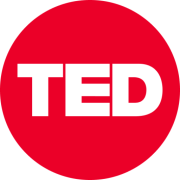- |
The uses of AI are seemingly limitless, a fact perhaps most easily apparent in the world of art. While some artists fear their skills could be replaced by computer-generated creations, others have embraced machine learning collaborations, spawning mind-boggling works of the imagination. In Session 10 of TED2023, five speakers explore the creative possibilities opened up by AI and discuss the pros and cons of a world where everyone — even computers — can create.
The event: Talks from Session 10 of TED2023: Possibility, hosted by head of TED Chris Anderson
When and where: Thursday, April 20, 2023, at the Vancouver Convention Centre in Vancouver, BC, Canada
Speakers: Shou Chew, Eileen Isagon Skyers, Bilawal Sidhu, Refik Anadol, K Allado-McDowell
Hot on the heels of his congressional testimony, TikTok CEO Shou Chew sits down with head of TED Chris Anderson to discuss the roots of TikTok: what it does, how it works and what it’s doing to protect its users. Chew reaffirms his platform’s dedication to offering creativity, inspiration and fun to millions, while addressing the privacy concerns that have led many in the United States to call for a ban. Far from being a potential data gold mine for the Chinese government, Chew says, all new information on US users harvested by the app’s revolutionary interest-predicting algorithms is housed in servers within the US — although he admits it will take the rest of 2023 to delete old data stored in servers elsewhere. Meanwhile, TikTok continues to prioritize safety, particularly for its youngest users, by limiting access to sensitive material, gently offering suggestions to reduce screen time and moderating content (a Herculean task performed by AI algorithms in tandem with 10,000 human moderators).

Media art curator Eileen Isagon Skyers speaks at Session 10 of TED2023: Possibility on April 20, 2023, in Vancouver, BC, Canada. (Photo: Gilberto Tadday / TED)
From bizarre lifeforms to imaginary influencers, we’ve seen AI create all sorts of images, says media art curator Eileen Isagon Skyers — but how do we engage with art made by machines? She points to artists, metaphors and narratives that are pushing the boundaries of AI, including Mario Klingemann’s “Memories of Passersby I”: a machine that uses neural networks to generate a seemingly infinite stream of portraits trained on images from the 17th to 19th centuries. Isagon Skyers shows how AI can be a gateway beyond the human imagination (and physical reality), like artist Sophia Crespo‘s AI-generated “Neural Zoo” which depicts chimeras that don’t exist. She points to Sara Ludy’s multi-media digital art that explores immateriality, Ivona Tau’s AI-generated images that could be mistaken for photographs and Claire Silver’s collaborative paintings she creates with machines. In order to grapple with an increasingly technological future, we need to see what’s being made at the intersection of human and machine creativity, says Isagon Skyers.
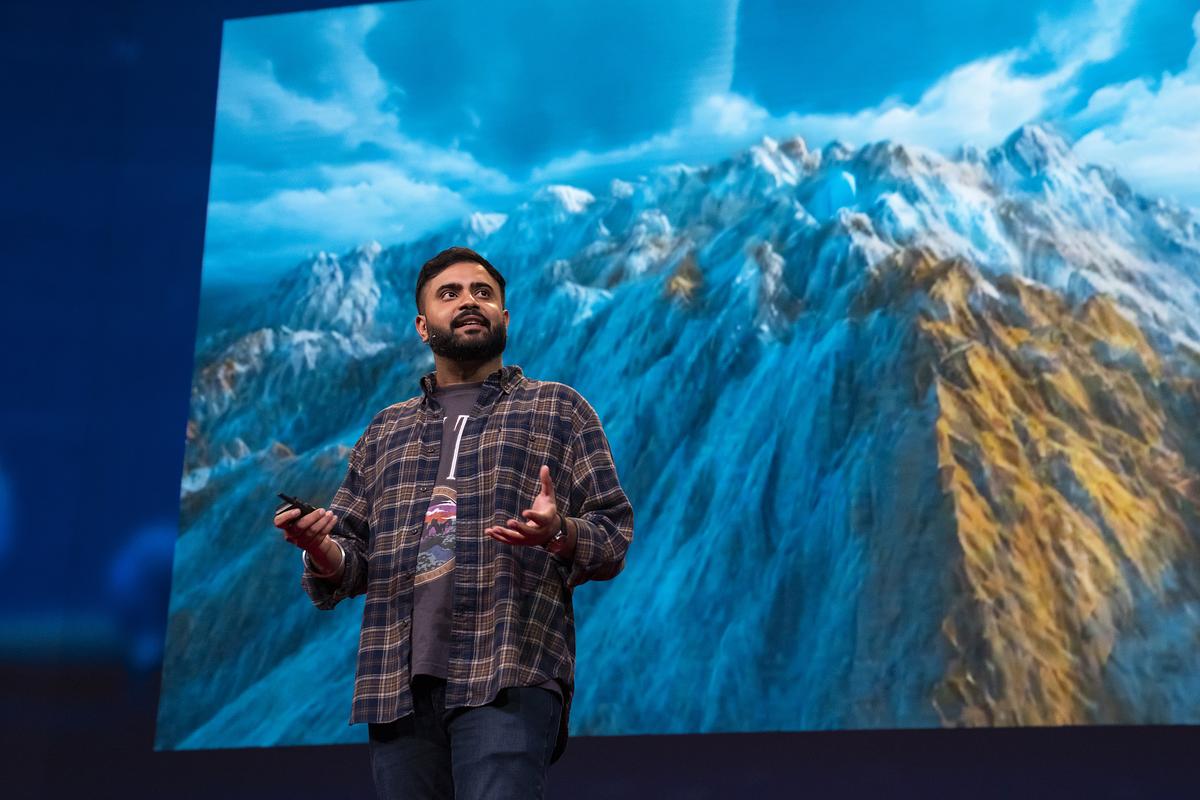
Creative technologist Bilawal Sidhu speaks at Session 10 of TED2023: Possibility on April 20, 2023, in Vancouver, BC, Canada. (Photo: Gilberto Tadday / TED)
Creative technologist Bilawal Sidhu is on a lifelong quest to blur the lines between reality and imagination. As a kid, this meant making videos manipulated with computer graphics and visual effects. Now, with advances in AI, this quest is getting supercharged, he says. He offers a tour of the techniques he’s been playing with, including Neural Radiance Fields (NeRF), which create volumetric 3D scenes based on 2D images, and ControlNet, which lets users guide an AI image generation process and essentially re-skin reality. The end result? Young creators no longer need to master expensive tools and esoteric knowledge, he says. Creation will be democratized, and all that’s required is a vision and a knack for co-creating with AI models.
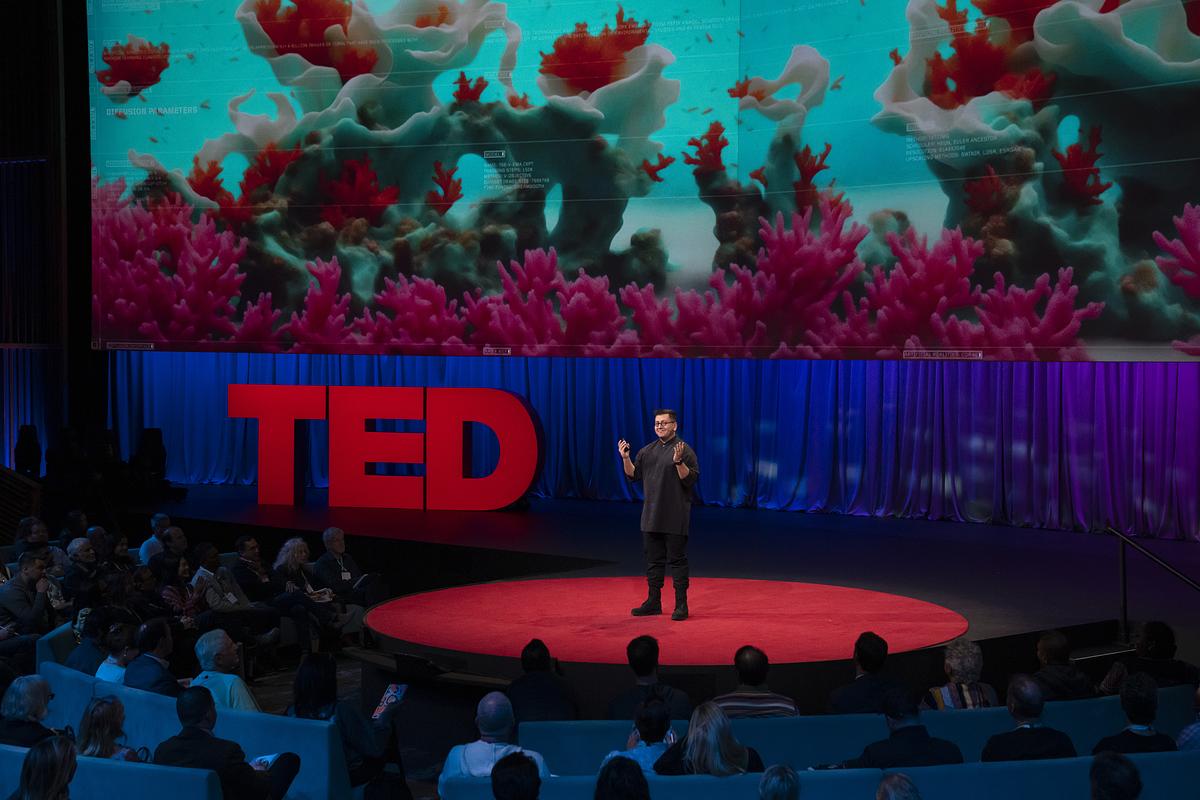
Media artist Refik Anadol speaks at Session 10 of TED2023: Possibility on April 20, 2023, in Vancouver, BC, Canada. (Photo: Gilberto Tadday / TED)
Vividly colorful images of artificial coral reefs ripple on a massive screen behind media artist and director Refik Anadol as he describes his project “Coral Dreams”: AI-generated imagery of corals, created by an algorithm trained on more than 100 million images. Anadol uses machine learning algorithms by harnessing large, publicly available data sets and transforming them into visualizations that tap into humanity’s collective memories — essentially preserving the disappearing parts of nature while also creating artificial realities. With data as his paintbrush, Anadol evokes the feeling of being digitally immersed in nature: projects like “Floral Dreams” use AI trained on 75 million floral images, while “scent of our dreams” uses an algorithm trained on more than half a million scents. As the lines between physical and virtual, nature and technology blur, generative AI helps us create new multi-sensory realities and reflect on the world we live in. Deeply inspired by the leaders of the Yawanawá tribe in Brazil, Anadol asks, “Could we use AI to preserve and learn about ancient knowledge about nature?”
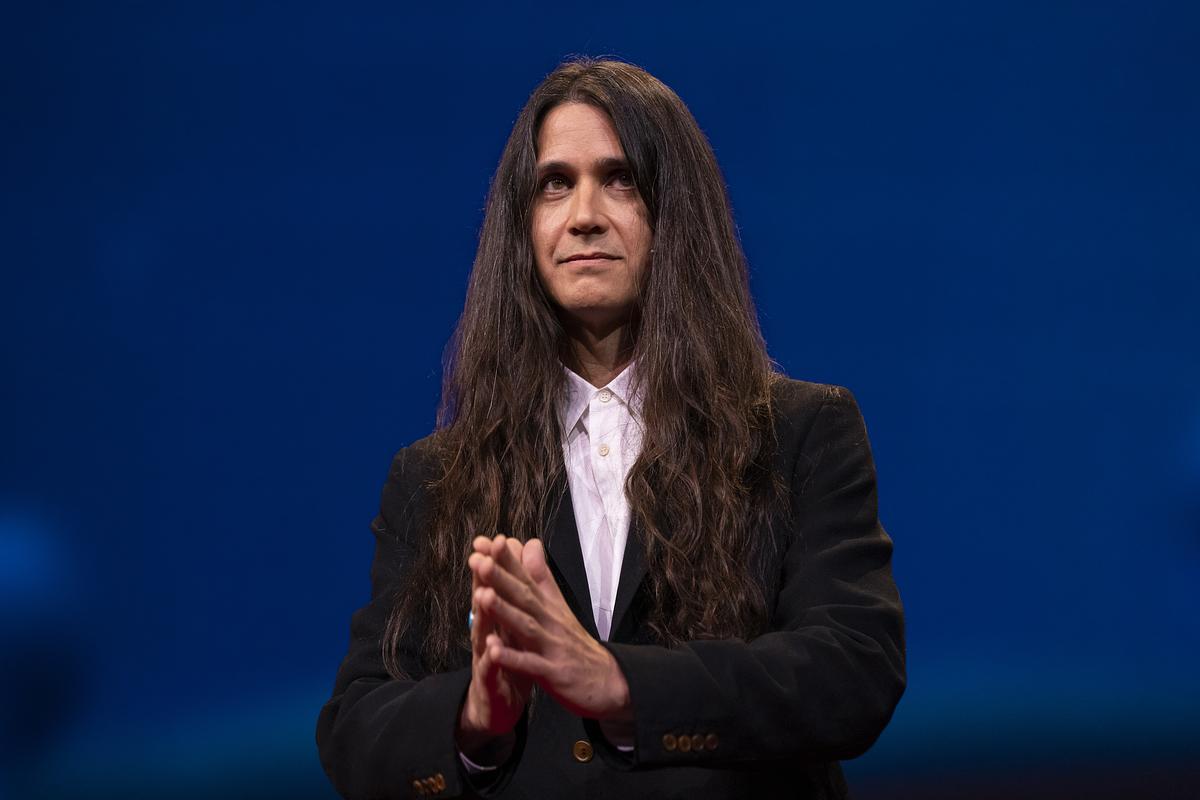
AI collaborator K Allado-McDowell speaks at Session 10 of TED2023: Possibility on April 20, 2023, in Vancouver, BC, Canada. (Photo: Gilberto Tadday / TED)
“Are we at risk of losing what makes us most human? How can we preserve and even enhance the best in ourselves with AI?” asks writer, musician and AI collaborator K Allado-McDowell. They believe the answer lies in creation, collaboration and care. Having written three books with the aid of AI, Allado-McDowell says nurturing creative relations with these programs can help open the mind, bringing to life ideas that could never have been born of a single creator. Collaboration is important for shaping a well-rounded and diverse future of AI, as the voices that are fed into machine learning help shape its output, too. Finally, Allado-McDowell believes AI should most prominently be used to discover new ways to help people heal, through both art and science, emphasizing care as a north star.
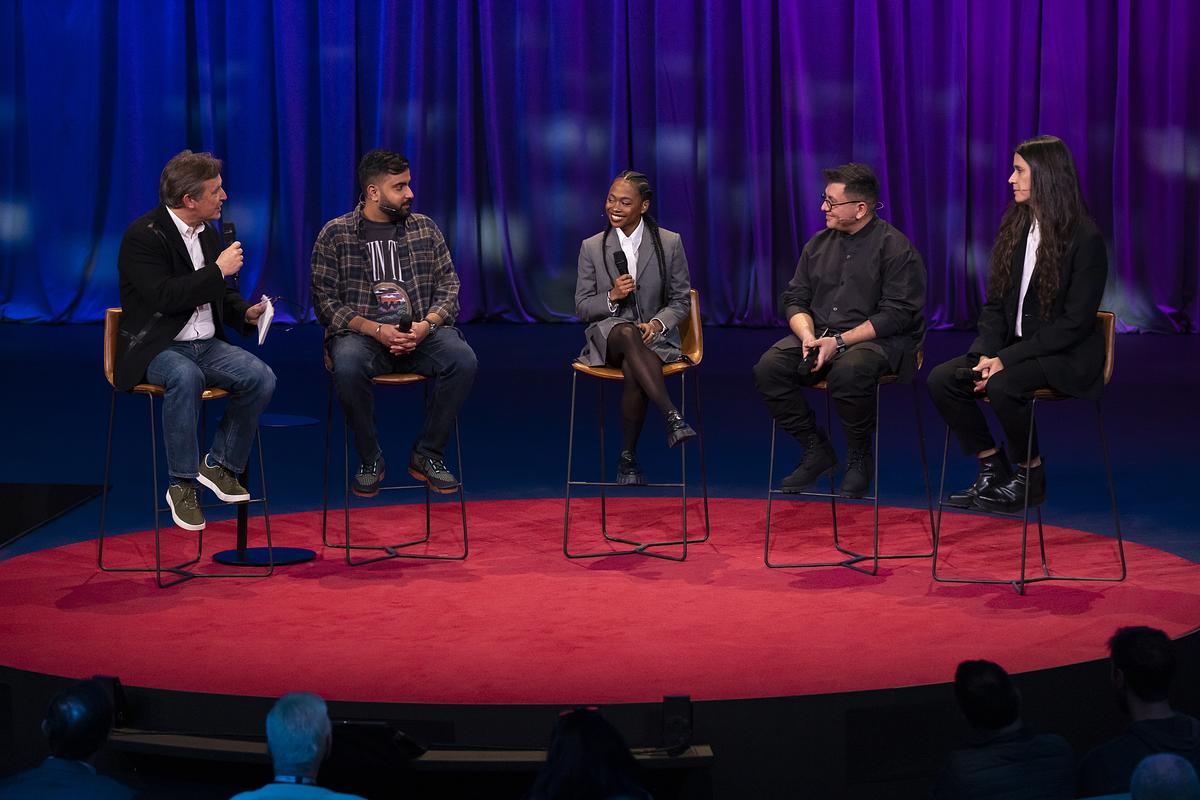
Head of TED Chris Anderson (left) speaks with Bilawal Sidhu, Eileen Isagon Skyers, Refik Anadol and K Allado-McDowell at Session 10 of TED2023: Possibility on April 20, 2023, in Vancouver, BC, Canada. (Photo: Gilberto Tadday / TED)
In a fascinating discussion on the state of art in the age of AI, artists Eileen Isagon Skyers, Bilawal Sidhu, Refik Anadol and K Allado-McDowell share how they’re using tools like Midjourney, Stable Diffusion and DALL-E to fuel their creativity. With questions from head of TED Chris Anderson, the four creators dig into a range of topics: the repercussions of a market flooded with people who can now make art within seconds, the potential need for new copyright rules, and the role of creative constraints when working with AI tools. They end by sharing what excites them most about this novel, exploratory phase of artistic creation. The field is wide open, says K Allado-McDowell: it’s up to anyone to become a genre-defining mastermind of the form.
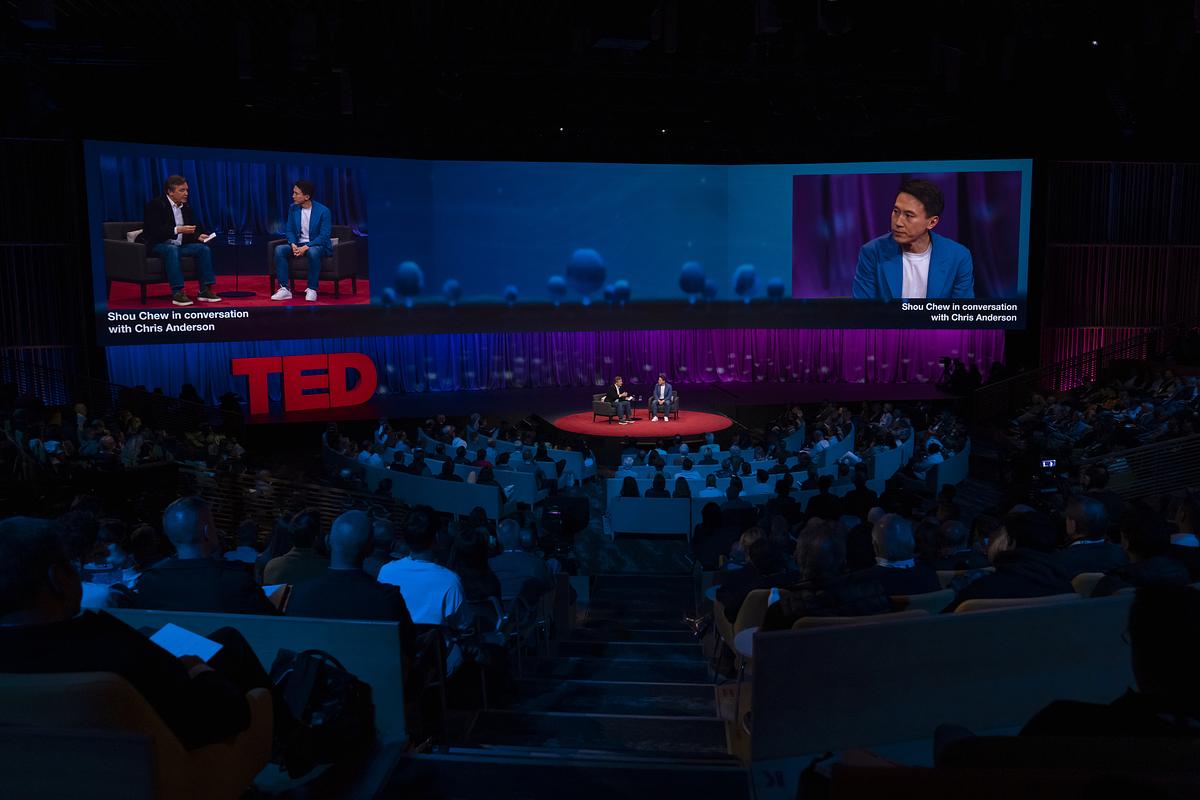
Head of TED Chris Anderson and TikTok CEO Shou Chew speak at Session 10 of TED2023: Possibility on April 20, 2023, in Vancouver, BC, Canada. (Photo: Jason Redmond / TED)
